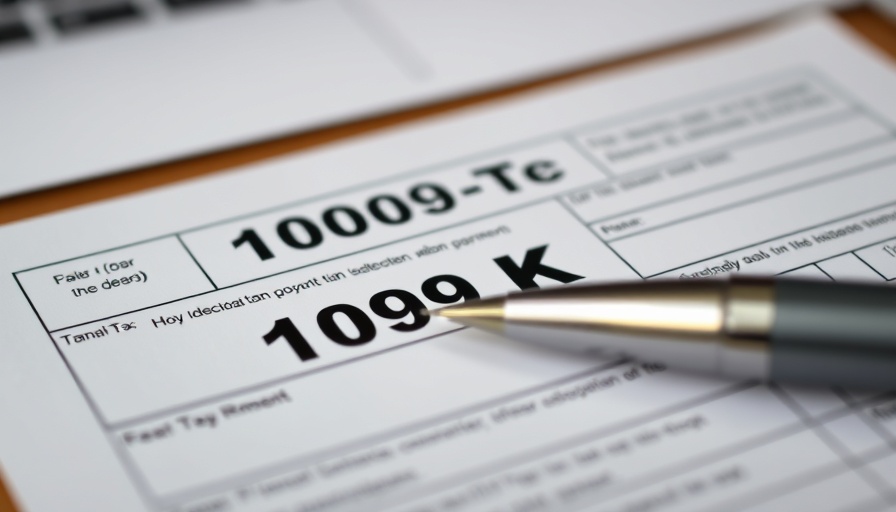
Understanding the 1099-K Form: A Crucial Element of Tax Filing
The 1099-K form is essential for anyone engaged in processing payments through third-party networks such as credit cards and payment apps like PayPal or Venmo. If you've received a 1099-K, understanding how it affects your tax return is crucial. Following recent changes in tax laws, particularly with the increased reporting thresholds, it's more imperative than ever for tax planners to familiarize themselves with this form and its implications for their clients.
Who Needs to Report and Why?
The 1099-K will typically be issued to individuals or businesses that have processed more than $600 in payments through a third-party network in a single calendar year. This report is not just a piece of paper; it is a signal for the IRS that a specific income amount has been processed, necessitating correct reporting on your tax return. Simply put, if you're in a position where you receive such a form, it's time to reevaluate your tax strategies to ensure you aren't caught unaware at tax time.
The Nuances of Reporting: Understanding Tax Implications
The necessity of correctly reporting income presented on a 1099-K can have significant tax consequences. Misreporting can lead not only to potential tax penalties but also to interest on unpaid taxes. Therefore, tax planners should meticulously ensure their clients' tax returns accurately reflect all income. This includes contributions from side hustles and gig economy jobs that often fluctuate in income but commonly do trigger a 1099-K due to the way they’re processed.
Strategies to Prepare for the 1099-K Impact
Tax preparation demands strategic foresight. Here are three essential tax tips:
- Document Everything: All income—whether you receive a 1099-K or not—should be documented. Keeping clear records aids not only in accurately reporting income but also in identifying possible tax exemptions or deductions.
- Engage a Tax Accountant: As tax laws evolve, working with a tax advisor familiar with recent changes can be invaluable. They can provide insights into tax planning, helping taxpayers navigate potential pitfalls.
- Leverage Deductions: Many self-employed individuals may overlook deductions available to them. From expenses related to running a home office to assets purchased for business purposes, understanding tax write-offs can significantly lower tax liabilities.
Future Trends: The Evolving Tax Landscape
As technology advances, so do the methods of payment and reporting. Future IRS initiatives may well push for more stringent reporting procedures, much like what's seen currently with the 1099-K. Tax planners must keep a finger on the pulse of these changes to ensure their strategies align with evolving tax regulations to avoid liabilities and optimize tax savings for clients.
A Common Misconception: 1099-K and Tax Evasion
While transcription errors or misunderstandings about 1099-K reports are not uncommon, they can easily lead to accusations of tax evasion if not carefully reviewed. It’s vital for tax planners to differentiate between genuine oversights and negligence, ensuring proactive education for clients about the reporting process.
Conclusion: Be Proactive for Tax Season
Preparing for tax season can seem daunting, but understanding forms like the 1099-K is vital for efficient tax planning. By recognizing what it means for income reporting and seeking professional guidance, taxpayers can navigate the complexities of their financial obligations with confidence. With the filing deadline approaching, now is the time to ensure you're ready for what’s on your tax return.
 Add Row
Add Row  Add
Add 



Write A Comment